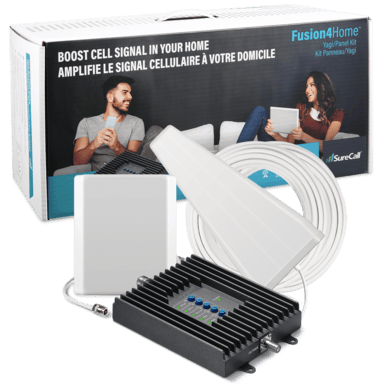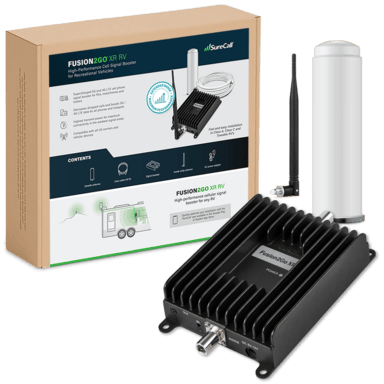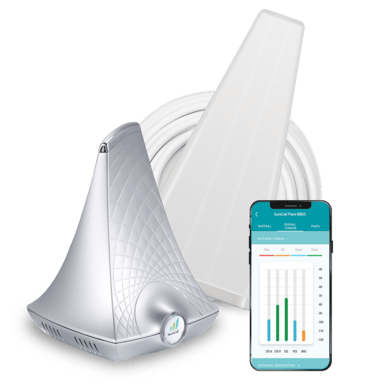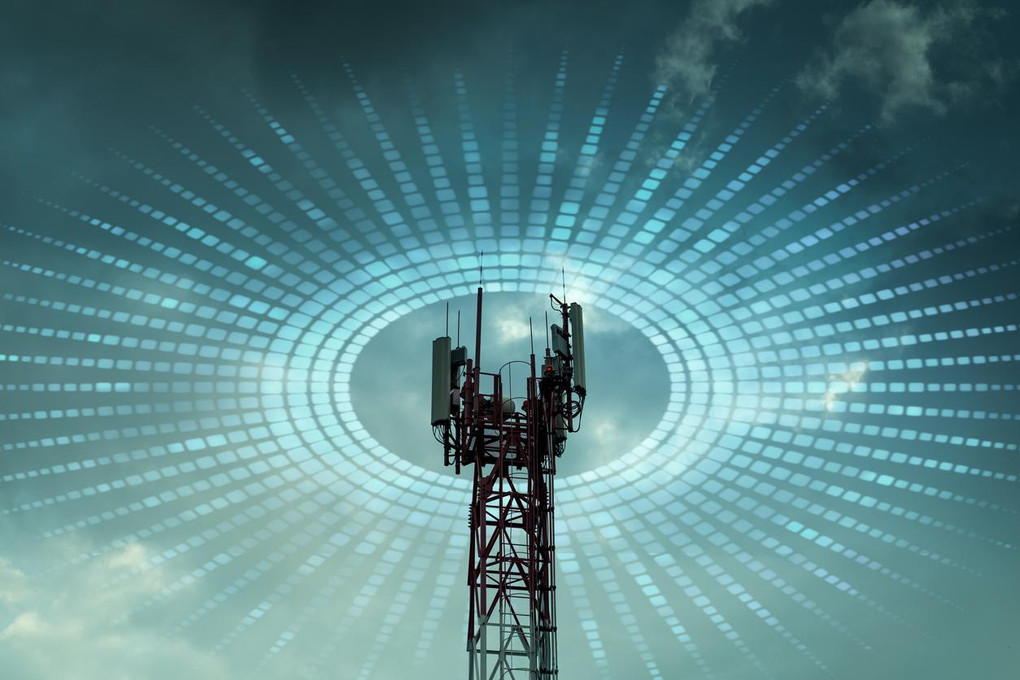
AT&T Cell Signal Coverage Map
Posted by Dennis Findley on 13th Mar 2019
Everything you need to know about the AT&T coverage map for the US.
In 2019 AT&T ranks as the best network for 3G cell coverage and the third best 4G LTE coverage in the United States. Looking at T-Mobile vs Verizon coverage, the AT&T 4G coverage map trails T-Mobile by 1% and Verizon by 12%.
Don’t let the numbers mislead you, AT&T’s 58% coverage map could still offer the best service for your specific area. Click on our tool below to find your carrier's nearest cell tower location.
How To Find AT&T Cell Towers
Use these websites to get a general idea of the AT&T coverage map in your area by looking at cell tower and antenna locations, hear reviews from other AT&T customers, and more by using these free tools.
- Good: CellReception – The cellular customer reviews here are a good way to get an idea of where there are cellular issues in an area. In our personal experience, we have been to some places that have 1-star reviews but have actually had great service in other parts of that area. That said, it’s always better to test the signal in that area yourself whenever possible.
- Better: Cell Mapper – The data on this site is great but may be challenging for a less technical cellular customer to read. The map clearly shows the exact location of cell towers near your location, the direction each faces, the bands supported, and much more.
- Best: Antenna Search – The data here is very good but the website itself can be a little bit challenging to navigate. Search by address to find all towers and antennas in a specific area and get data that clearly shows which cell company or companies operate on each cell tower.
AT&T Coverage Map for 4G LTE & 5G
The AT&T 4G network covers the majority of the United States but falls short of T-Mobile and Verizon in specific areas, which can be seen clearly on the map below. While AT&T’s 4G cell network covers some portion of every state in the US, there are some states that have larger gaps in the network.
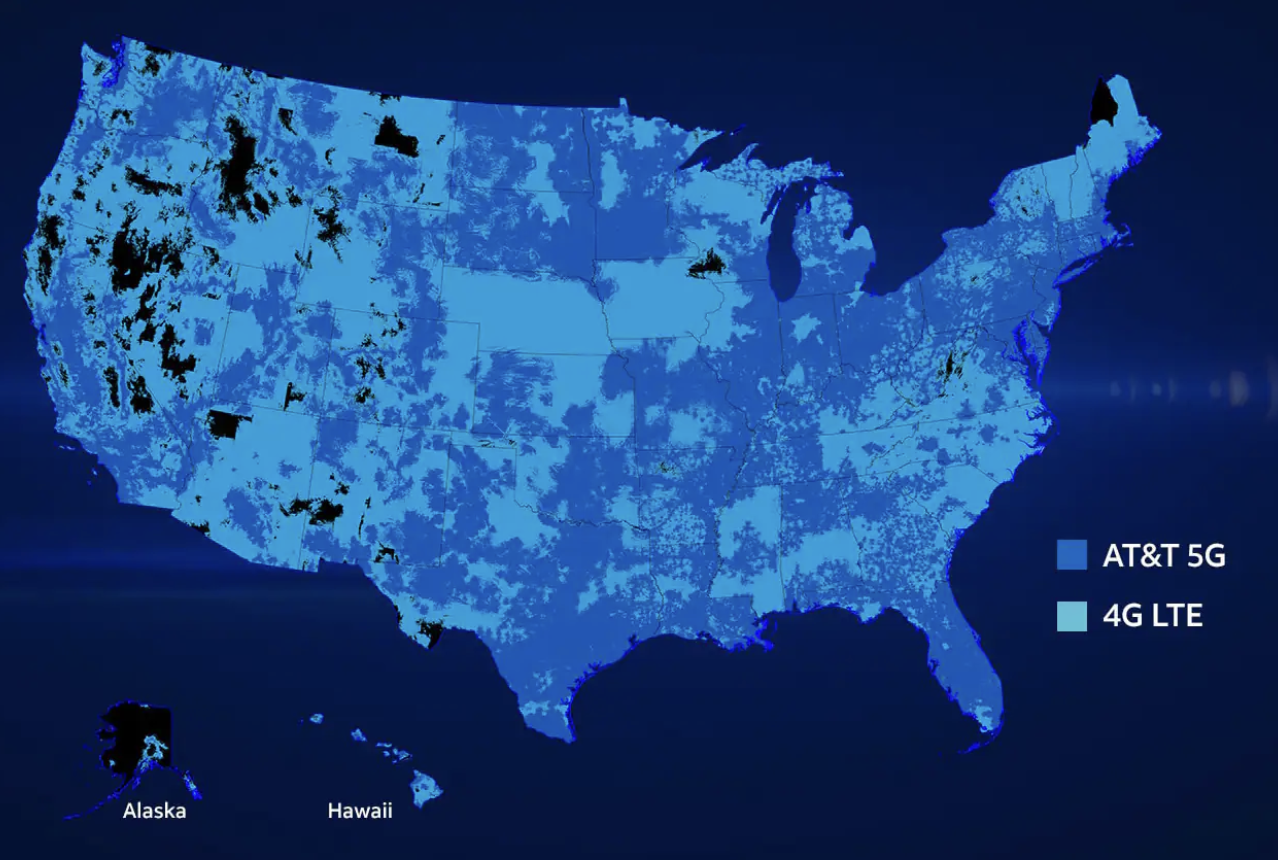
Image from: https://www.att.com/5g/coverage-map/
AT&T trails T-Mobile and Verizon in the size of their 4G coverage across the US. The 4G LTE network allows customers to call, text, and load large amounts of data at fast speeds. Until 5G becomes available later this year, 4G LTE is the best of the best as far as cellular connectivity goes (Suggested Post: 3G vs 4G vs 5G).
States like Alaska, Arizona, Maine, Nebraska, Nevada, and Wyoming have AT&T service, but their network is covering only 60% or less of the totally territory of these states.
Keep in mind that even those areas that are shown as being covered by AT&T may still have connectivity issues caused by building structures, dense foliage, or mountainous terrain. To increase your chances of maintaining cell service in these areas, you may need the help of a signal booster or femtocell.
AT&T Coverage Map for 3G
When it comes to comparing the AT&T coverage map to Verizon, Sprint, and T-Mobile the network with the best coverage will be the one with biggest coverage map for two networks – 4G, which we mentioned earlier, and 3G, which still supports many areas that still do not have 4G coverage.
AT&T offers the largest 3G coverage map across all major US carriers. 3G cell signals allow us to call, text, and load small amounts of data. The benefit to 3G cell signals is that they can travel further distances, which allows them to provide wider-spanning coverage in rural areas. The disadvantage compared to 4G LTE is an inability to load large amounts of data at fast speeds.
AT&T Coverage Map by State
How good is 4G LTE cell coverage for the AT&T network, really? Take a look at the chart below to see exactly how much of your state falls within AT&T’s coverage map.
| State | Percentage Covered | Mile Covered (mi²) |
| Alaska | 8.28% | 49,077 mi² |
| Alabama | 98.73% | 51,101 mi² |
| Arkansas | 99.15% | 52,790 mi² |
| Arizona | 59.41% | 67,962 mi² |
| California | 76.08% | 120,516 mi² |
| Colorado | 79.31% | 82,700 mi² |
| Connecticut | 99.98% | 5,031 mi² |
| Delaware | 99.99% | 2,075 mi² |
| Florida | 99.04% | 58,118 mi² |
| Georgia | 99.75% | 58,118 mi² |
| Hawaii | 93.48% | 6,390 mi² |
| Iowa | 90.85% | 51,262 mi² |
| Idaho | 64.19% | 53,265 mi² |
| Illinois | 99.74% | 56,198 mi² |
| Indiana | 99.99% | 36,218 mi² |
| Kansas | 99.84% | 82,156 mi² |
| Kentucky | 99.46% | 40,177 mi² |
| Louisiana | 98.91% | 46,227 mi² |
| Massachusetts | 99.86% | 8,337 mi² |
| Maryland | 98.41% | 10,739 mi² |
| Maine | 45.39% | 15,165 mi² |
| Michigan | 97.57% | 58,180 mi² |
| Minnesota | 97.36% | 82,276 mi² |
| Missouri | 98.02% | 68,257 mi² |
| Mississippi | 98.01% | 46,743 mi² |
| Montana | 68.40% | 100,808 mi² |
| North Carolina | 91.68% | 46,394 mi² |
| North Dakota | 97.42% | 68,102 mi² |
| Nebraska | 47.75% | 37,203 mi² |
| New Hampshire | 81.70% | 7,888 mi² |
| New Jersey | 99.99% | 7,731 mi² |
| New Mexico | 80.61% | 96,757 mi² |
| Nevada | 51.42% | 57,263 mi² |
| New York | 95.33% | 46,680 mi² |
| Ohio | 99.89% | 41,297 mi² |
| Oklahoma | 95.77% | 66,936 mi² |
| Oregon | 68.79% | 66,936 mi² |
| Pennsylvania | 95.39% | 43,222 mi² |
| Rhode Island | 99.95% | 1,178 mi² |
| South Carolina | 98.98% | 30,900 mi² |
| South Dakota | 99.09% | 76,202 mi² |
| Tennessee | 93.12% | 39,213 mi² |
| Texas | 96.61% | 257,778 mi² |
| Utah | 82.71% | 69,010 mi² |
| Virginia | 90.20% | 36,811 mi² |
| Vermont | 96.37% | 9,268 mi² |
| Washington | 79.33% | 54,290 mi² |
| Wisconsin | 90.58% | 50,743 mi² |
| West Virginia | 92.61% | 22,426 mi² |
| Wyoming | 53.63% | 53,169 mi² |
Source: WistleOut.com
Carriers That Use AT&T’s Network
The AT&T network is also shared by other carriers, called Mobile Virtual Network Operators (MVNO). You can see a list of all AT&T’s MVNOs below.
| Carrier Name | Networks Shared |
| Consumer Cellular | AT&T, T-Mobile |
| Cricket Wireless | AT&T |
| FreedomPop | AT&T, Sprint |
| FreeUp Mobile | AT&T |
| H2O Wireless | AT&T |
| Net10 | AT&T, T-Mobile, Sprint, Verizon, US Cellular |
| Pix Wireless | AT&T, Sprint |
| Red Pocket | AT&T, Sprint, T-Mobile, Verizon |
| Straight Talk | AT&T, Sprint, T-Mobile, Verizon |
| TracFone | AT&T, Sprint, T-Mobile, Verizon |
What is a MVNO?
These are cell companies that don’t actually have their own cellular infrastructure, like cell towers. Instead, they buy wholesale minutes, data and text from those carriers that own and maintain their cell towers.
Often, cellular customers can find better deals through these MVNOs but will need to beware of roaming.
The major carriers frequently have roaming agreements with other carriers. This means when there is no AT&T coverage in an area, the cellular customer may be allowed to use another network, like Verizon, while in that area.
These roaming agreements between the carriers are typically not shared with MVNOs. This means when you leave the Cricket Wireless’ AT&T coverage area, you will not have cellular coverage.
How is the AT&T Coverage Map Calculated?
Coverage maps, regardless of cell company, are calculated based on cell tower locations and the cell tower’s power or range.
Most coverage maps don’t have the data intelligence needed to take into account obstacles like mountains, valleys, trees, or buildings that may keep a cell signal from reaching a location that should otherwise be within its reach.
In other words, these coverage maps are painted with a broad brush. In the next section we’ll show you more accurate ways to check AT&T coverage in your area.
Better Ways to Check AT&T Cell Coverage
Cell phone coverage maps are a great resource if you are wondering if a specific cell carrier provides cell service for a general region.
We’ve spoken with a lot of cell phone customers since 2001 and have these to be more accurate ways to see AT&T’s coverage map:
- Good: Cell Tower Map – Locate AT&T cell towers near the areas you frequent to get a better idea of cell service in that specific subsection of the city. Our favorite website is com.
- Better: Ask Your Network – See actual customer reviews for coverage in that area using a site likecom, or even better, reach out to the community to ask what their experience is like. We suggest Facebook groups in that area or simply asking around town.
- Best: Test Your Cell Signal – Use an app on your phone to test the exact cell signal in an exact spot. The Android app OpenSignal gives you an accurate cell phone signal reading or you can also enter field test mode. Unfortunately, these apps no longer work for Apple or iPhone devices running iOS 11 or later.
Keep in mind that many towers will have limitations to range and user capacity, which will vary from tower-to-tower. For example, some AT&T towers will cover distances of 20-miles and support up to 1,000 simultaneous calls where others may cover 20-miles and 500 simultaneous calls. Also, some of these towers may also not be compatible with 4G LTE signals and may, instead, only transmit and receive 3G cell signals.
How to Extend the AT&T Coverage
Whether your area shows you fall within the AT&T coverage map or you are outside of the AT&T network, one of the solutions below should be able to improve AT&T cell service inside your home, office, or vehicle.
Good Option: AT&T Microcell
A microcell, also called a femtocell, acts like a mini cell tower inside of your home or office. These require you have a strong broadband internet connection (recommended minimum speeds of 1.5Mbps downstream and 256Kbps upstream), which the microcell uses to generate a cell signal for calling, texting, and cellular data.
Benefits of the AT&T Microcell:
- Able to generate cell signals in No Service areas
- The initial cost to purchase may be discounted on a case-by-case basis
- Usable AT&T service for call, text, and cellular data in a small area
Disadvantages of the AT&T Microcell:
- Be mindful of the monthly recurring fee
- Covers only a small coverage area of usually 1-2 rooms
- Only supports up to four simultaneous calls or data users
- Specific to AT&T and will not deliver service for any other cell carrier
Get more information about the AT&T microcell here.
Best Option: AT&T Signal Booster (Network Extender)
A signal booster, also called a cell signal booster or network extender, uses three components to capture cell signals, strengthen them, and distribute them inside any home, office, or vehicle.
Cell signal boosters are used across the US and used to improve cell service for all cell carriers in the US, including AT&T. They require that there is a usable cell signal outside or nearby to the building.
Benefits of the AT&T Signal Booster:
- Able to generate cell signals in weak cell service areas
- Every SureCall booster works with every North American carrier, including AT&T
- Improves all voice, text, and data signals
- Boosters available for car, truck, RV, small, medium, and large homes and offices
- Affordable with no monthly fees after purchasing
- SureCall signal boosters come with lifetime technical support, 3-year warranty, and 30-day returns.
Disadvantages of the AT&T Signal Booster:
- Require a cell signal outside or nearby to the home, office, or vehicle
- Some may require a more involved installation
Shop AT&T Signal Boosters for Home
Every SureCall signal boosters for home improve cell service for AT&T and every other North American cell carrier. These come with a 30-day return policy, lifetime technical support, and a 3-year warranty.
SureCall Flare
Award winning cell phone signal booster kit for small homes and offices up to 2,500 sq. ft.
- Improves all US cell carrier signals for best voice, text and 4G LTE data in small buildings
- Boosts signal for multiple users and all cellular devices
- Two component system with omni outside antenna easy installation
SureCall Fusion4Home
Powerful cell phone signal booster kit for best coverage in medium-size homes and offices up to 4,000 sq. ft.
- Boosts all US cell carrier signals for best voice, text and 4G LTE data in mid-size buildings
- Improves signal for multiple users and all cellular devices
- Customize the kit specifically for your home or office
SureCall Fusion5s
Powerful cell phone signal booster kit for best coverage in medium-size homes and offices up to 4,000 sq. ft.
- Boosts all US cell carrier signals for best voice, text and 4G LTE data in mid-size buildings
- Improves signal for multiple users and all cellular devices
- Customize the kit specifically for your home or office
AT&T Signal Booster for Car, Truck, & RV
All SureCall signal boosters for car improve cell service for AT&T and every other North American cell carrier. These come with a 30-day return policy, lifetime technical support, and a 3-year warranty. They can be installed easily inside any car, truck, SUV, or RV.
N-Range
[caption id="attachment_883" align="alignright" width="250"] SureCall N-Range Cell Signal Booster[/caption]
SureCall N-Range Cell Signal Booster[/caption]
The most powerful single-user cell phone signal booster kit for any car, truck, van or SUV.
- Boosts voice, text and 4G LTE signals in vehicles to stop dropped calls, unsent texts and slow data for all US carriers
- Improves cell reception for one device at a time
- Easiest install, streamlined design and hands-free
Fusion2Go 3.0
[caption id="attachment_882" align="alignright" width="250"] SureCall Fusion2Go 3.0 Cell Signal Booster[/caption]
SureCall Fusion2Go 3.0 Cell Signal Booster[/caption]
The most powerful multi-user cell phone signal booster kit for any car, truck, van or SUV.
- Improves voice, text and 4G LTE signals in vehicles to stop dropped calls, unsent texts and slow data for all US carriers
- Boosts cell reception for multiple users and all devices
- Max power, easy to install and hands-free
Fusion2Go 3.0 RV
[caption id="attachment_898" align="alignright" width="250"] SureCall Fusion2Go 3.0 RV Cell Signal Booster[/caption]
SureCall Fusion2Go 3.0 RV Cell Signal Booster[/caption]
The most powerful multi-user cell phone signal booster kit for any RV, trailer or motorhome.
- Improves voice, text and 4G LTE signals to stop dropped calls, unsent texts and slow data for all US carriers
- Boosts cell reception for multiple users and all devices
- Max coverage area and completely hands-free
AT&T Signal Booster for Office
SureCall’s signal boosters for office boost the cell signal for all cell carriers, including AT&T. A signal booster can be scaled to deliver reliable call, text and 4G LTE data cell service inside buildings up to 500,000 sq. ft.
Fusion5X 2.0
[caption id="attachment_820" align="alignright" width="250"] SureCall Fusion5X 2.0 Cell Signal Booster[/caption]
SureCall Fusion5X 2.0 Cell Signal Booster[/caption]
The most powerful multi-carrier cellular signal booster kit for mid-size offices.
- Boosts voice, text and 4G LTE signals for all US cell carriers in medium-size buildings
- Built-in SureIQ™ for 24/7 uptime at max performance and compatible with Sentry™ for remote monitoring
- Customizable kit options to fit your specific building
Force5 2.0
[caption id="attachment_788" align="alignright" width="250"] SureCall Force5 2.0 Cell Signal Booster[/caption]
SureCall Force5 2.0 Cell Signal Booster[/caption]
The most powerful multiple carrier cellular signal booster kit for large offices and enterprise buildings.
- Boost voice, text and 4G LTE signals for all US cell carriers in large buildings
- Equipped with Sentry™ for remote monitoring and SureIQ™ for 24/7 uptime at peak performance
- Customizable kit options and scalable to meet applications up to 500,000 sq. ft.
Fusion2Go XR RV Cell Phone Signal Booster
Fusion4Home Yagi Panel Indoor Signal Booster
